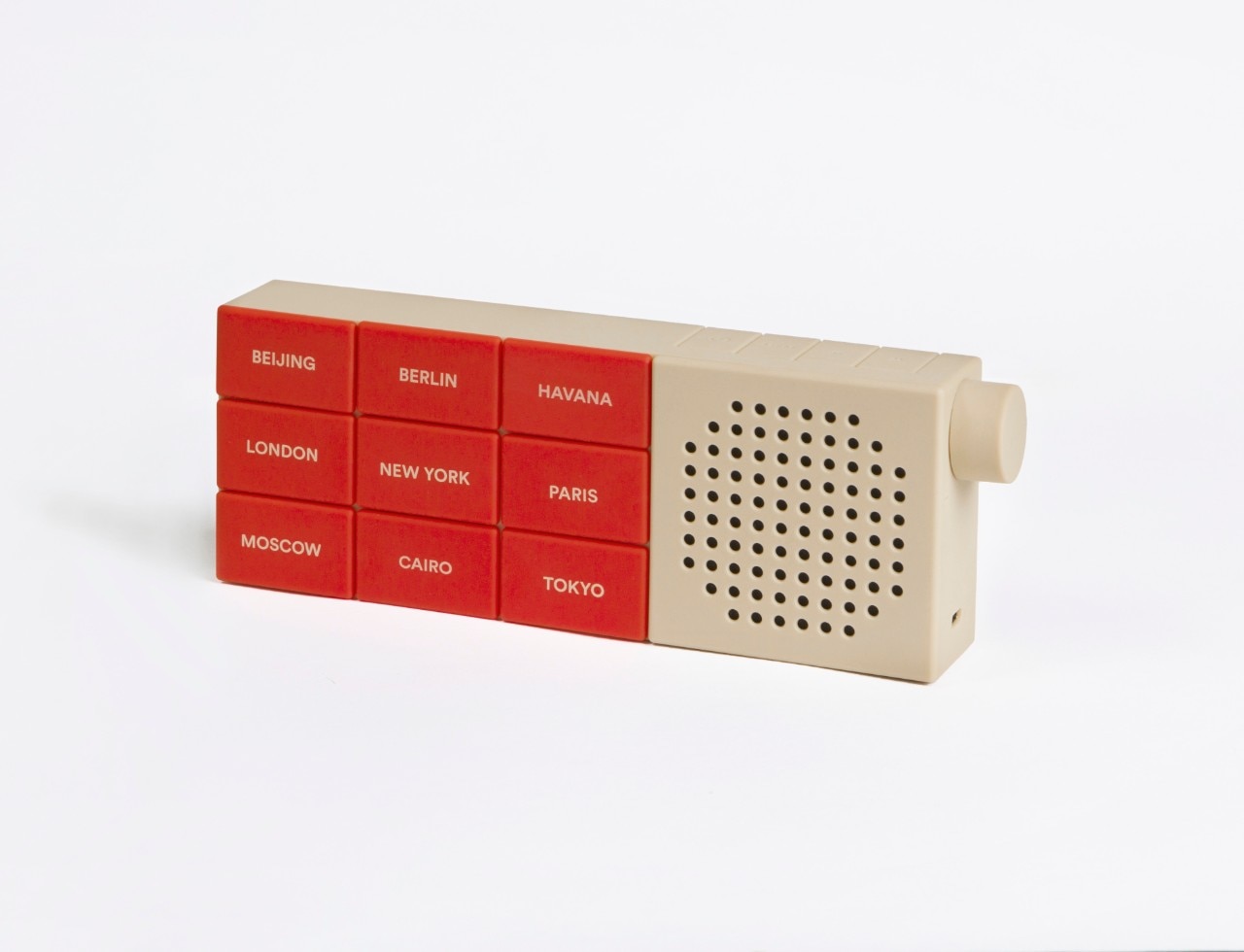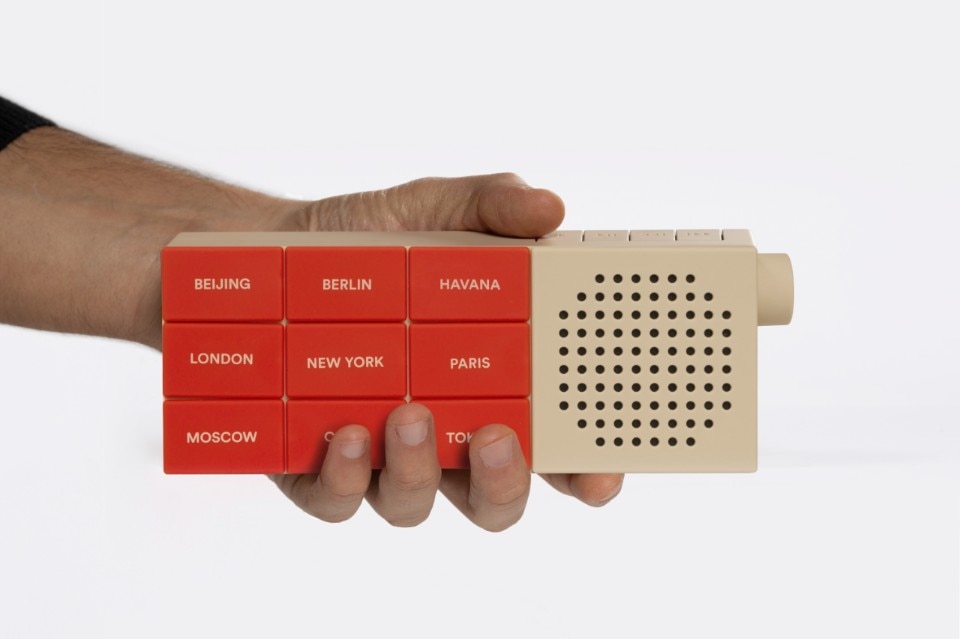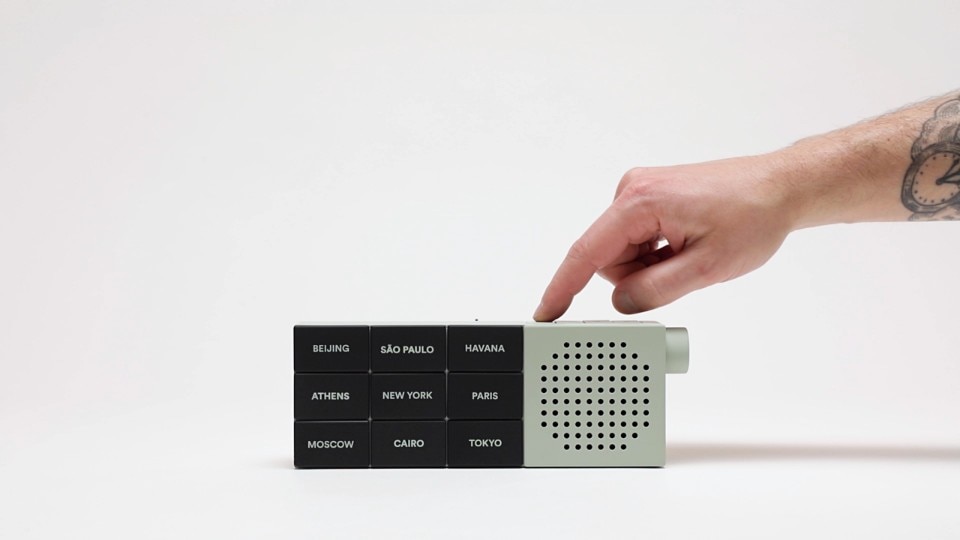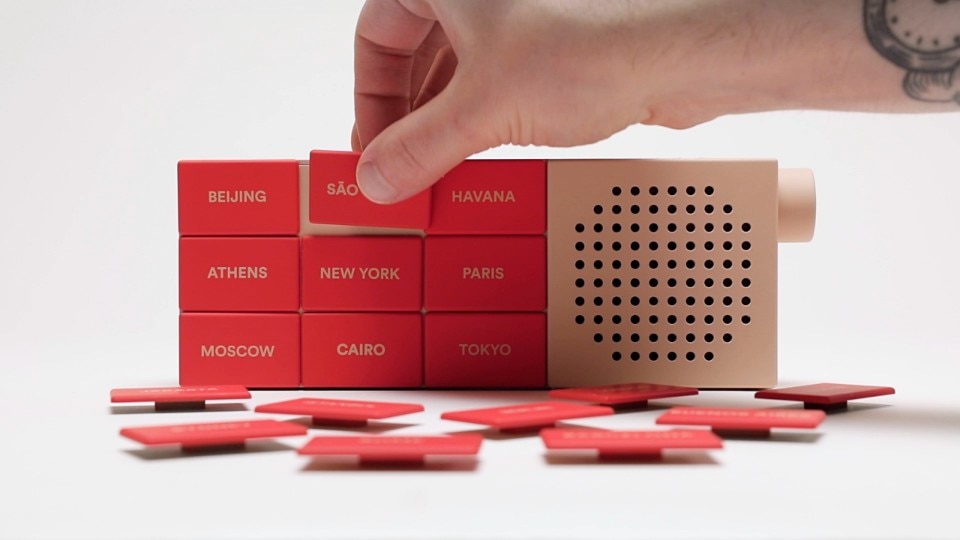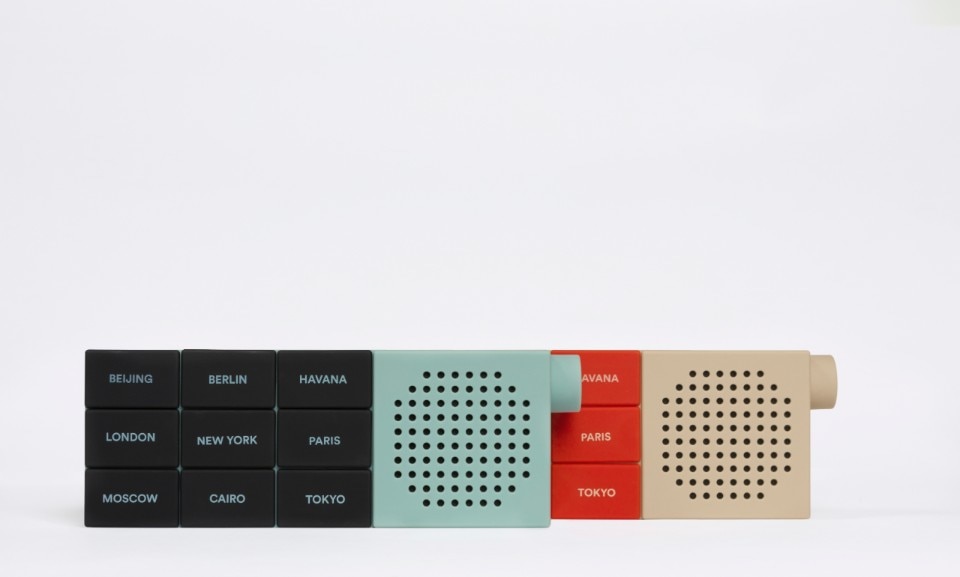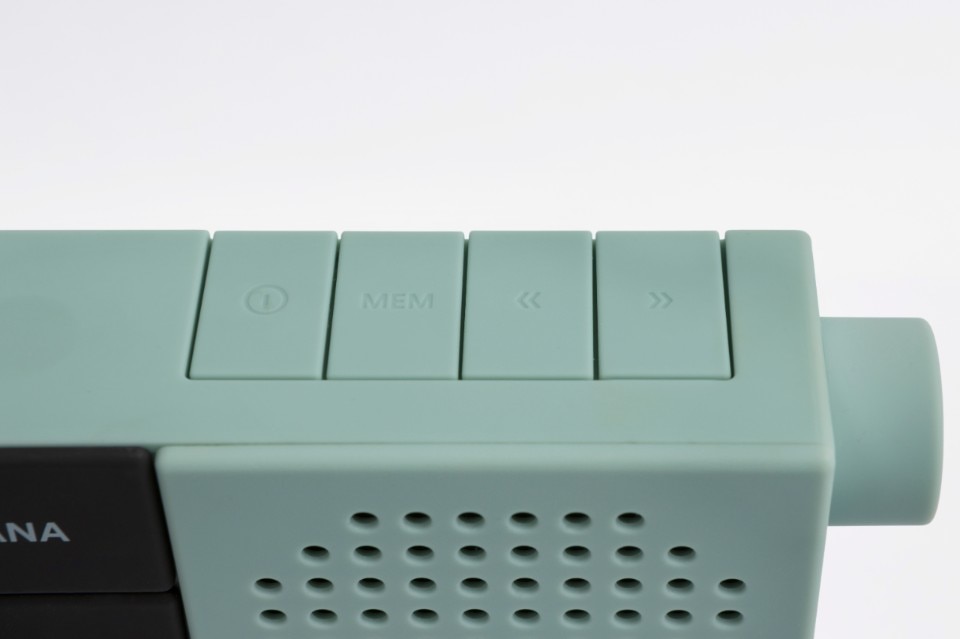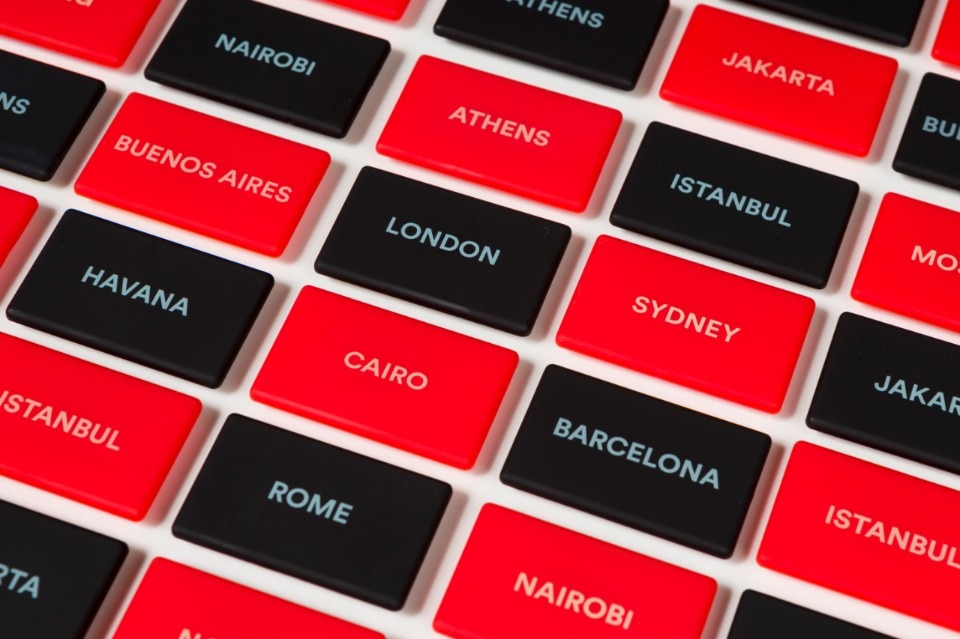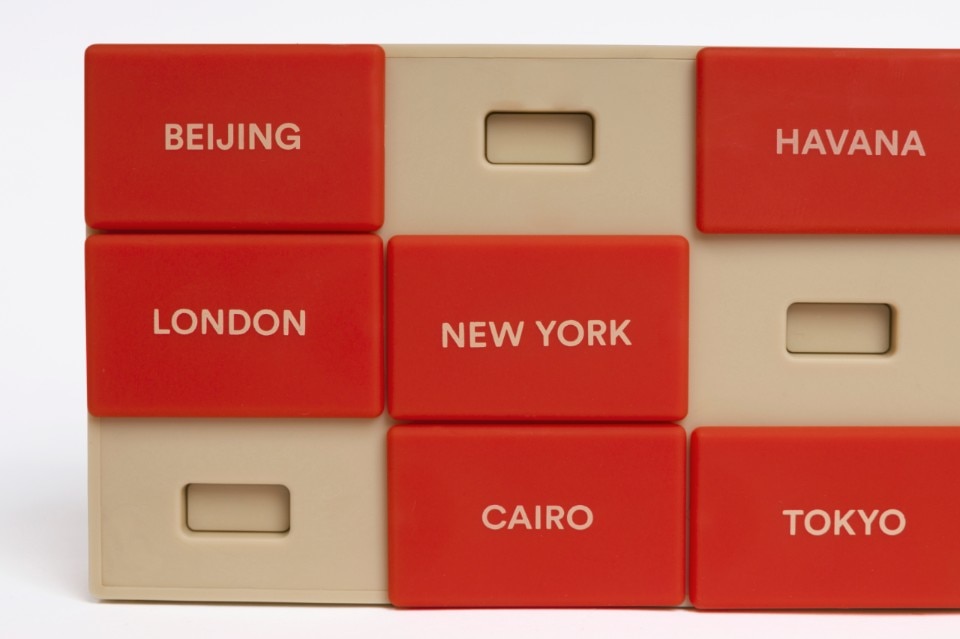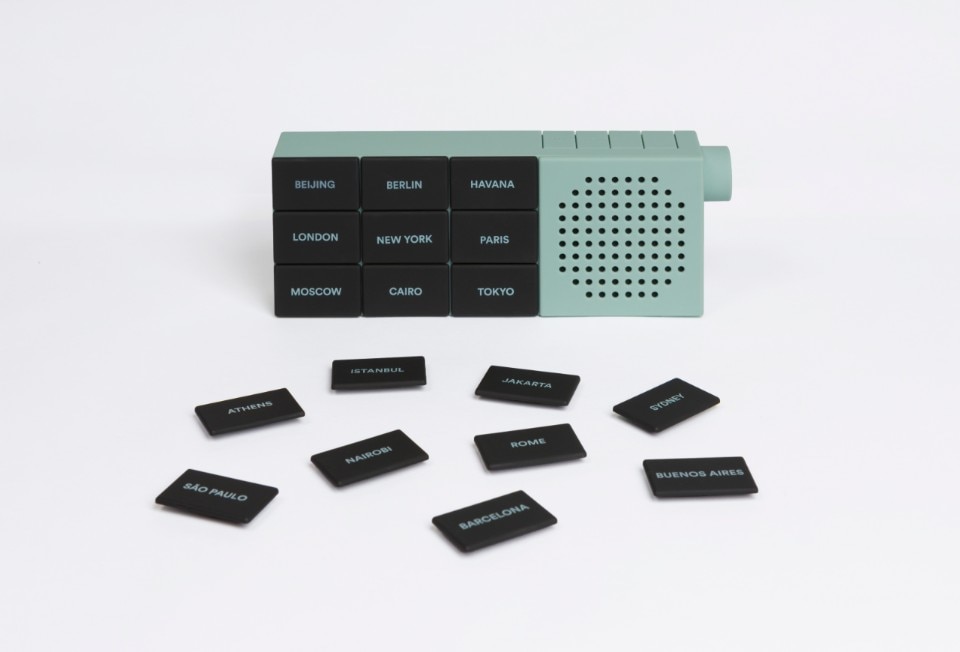CityRadio is a fun little box, a rectangle with a knob on one of its shorter sides. Apart from the speaker on the right, the front of the radio is entirely occupied by a grid of magnetic keys that is a journey around the world: from Beijing to Berlin, from Havana to London. And then to New York, to Cairo, and to the other cities that can be added to the grid. This is what Palomar's CityRadio looks like. It was designed by Emanuele Pizzolorusso, who for the Florence-based company had already designed the Crumpled Maps and won a Compasso d'Oro with the Lucetta bicycle lights. “I believe that the traditional radio as a device is on its way to becoming extinct. On the other hand, the mass communication instrument, that is, the radio we listen to, is more alive than ever”, the designer told Domus, emphasising that today we listen to the radio in the car, on our smartphones, in the form of podcasts. “Today, designing a radio set means first of all acknowledging this, and then trying to make the best out of the new possibilities that digital offers us”.
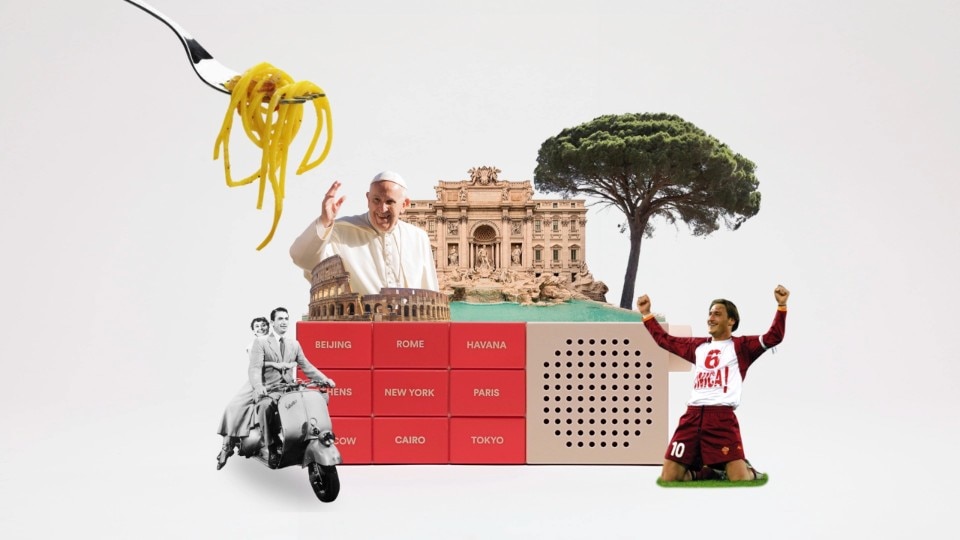
CityRadio is precisely the attempt to create a radio that keeps up with the times – a new take on a design classic that will compete for the next Compasso d'Oro 2022 and has been included in the Adi Design Index 2020. Its nine keys on the front allow you to connect with radio stations in nine different cities around the world. There is a key to navigate through the different stations and one to save your favourite frequency in each metropolis. It is a simple but hypnotic tour of the world, whose appeal was further enhanced by the months we spent under lockdown. In reality, as Pizzolorusso explains, the project dates back to before the health emergency. “The idea had already occurred to me a few years ago, I had spoken about it to Fabio Palchetti of Palomar but we didn't do anything about it. Then, we looked at the project from a slightly different perspective, we found a new key together, and the project took off”.
A modern-day device, the CityRadio lives in symbiosis with the smartphone and its dedicated app, which acts as a radio connection – via Bluetooth – with the radio signals from the world's main cities. Once the connection between smartphone and CityRadio has been established, the radio becomes the protagonist of the listening act. Perhaps this is the only real weak spot of this device, which does not connect directly to Wi-Fi, but always needs the mediation of a Bluetooth connection to pick up radio station signals.

“The approach with City Radio's concept was to have as much analogue and tactile interaction as possible,” Pizzolorusso says, explaining how the app is a technical expedient to be kept as far away from the user as possible. “I realise that is a bit of an unconventional approach,” he says.
Then, he clarifies his concept: smartphones and their screens do nothing more than simulating physical elements. But in this imperfect simulation – “at least for now”- there's a bit of discomfort, sometimes imperceptible. Like when we type on a virtual keyboard or use touch controls instead of a physical controller to play video games. “I believe that the ideal digital interface cannot be distinguished from the physical object. That is, with an actual tactility of its own“.
In this case, the physical object is a radio, designed with a certain functionalist touch, and with clear references to Dieter Rams' pocket-size devices he designed for Braun, which, together with Sapper and Zanuso's Brionvega, according to Pizzolorusso, were the forerunners of smartphones. A more direct inspiration comes from the appliances before 1950, “where the names of cities or national and international radio networks, often mysterious and exotic, appeared on the so-called dial scales”, explains the designer.
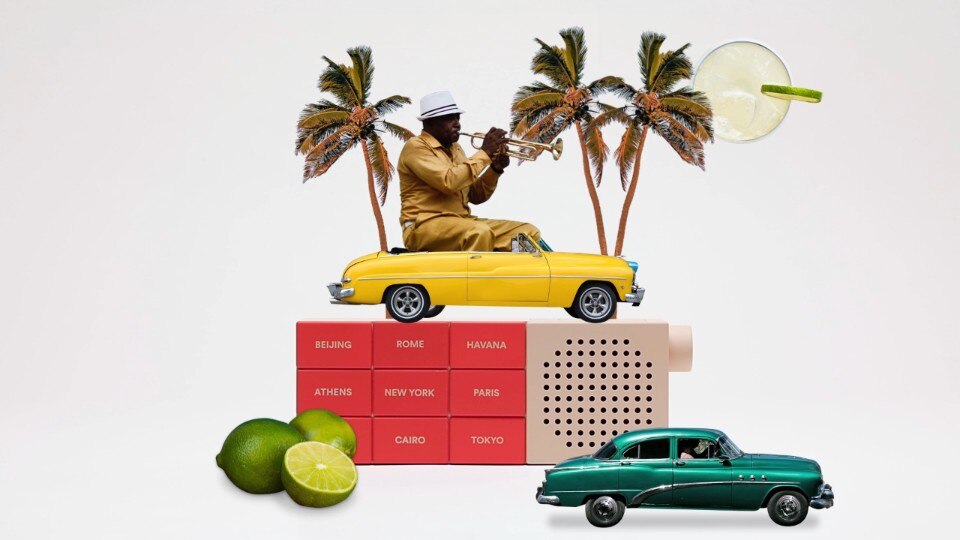
“I grew up with CDs and music magazines and I know how fascinating it is to discover a new band, or add an album to your own little archive. They were little windows on the world, a way to give space to your imagination,” he recalls. Today, Spotify has trivialised the imagination, because “it unfolds in front of me hundreds of bands that I might like, and whose entire discography I can listen to immediately”. So “it soon stops being interesting. The imagination stops being stimulated. I don't mean to say that I have an old-fogey outlook on this, but I am curious to understand how we can shape the world in the digital era without these side effects”.


